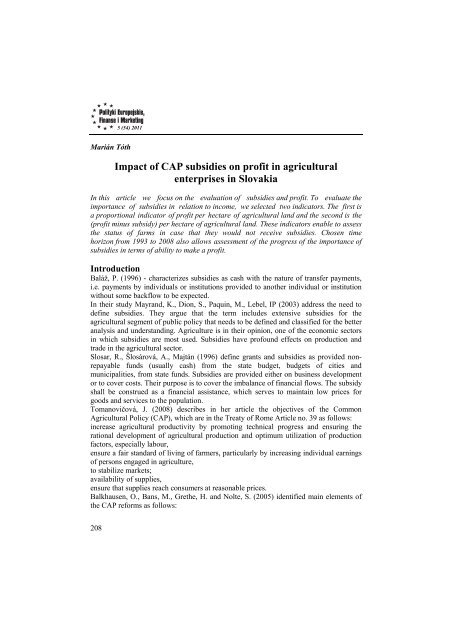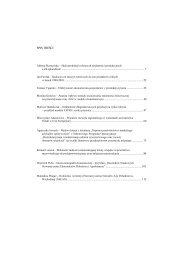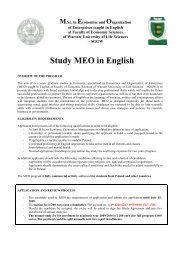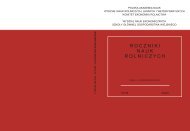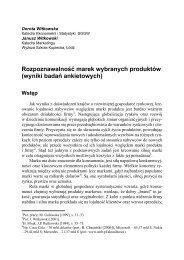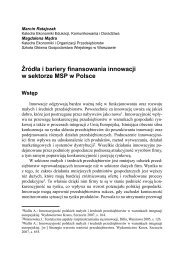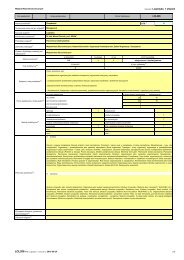pobierz - WydziaÅ Nauk Ekonomicznych SGGW w Warszawie
pobierz - WydziaÅ Nauk Ekonomicznych SGGW w Warszawie
pobierz - WydziaÅ Nauk Ekonomicznych SGGW w Warszawie
You also want an ePaper? Increase the reach of your titles
YUMPU automatically turns print PDFs into web optimized ePapers that Google loves.
5 (54) 2011Marián TóthImpact of CAP subsidies on profit in agriculturalenterprises in SlovakiaIn this article we focus on the evaluation of subsidies and profit. To evaluate theimportance of subsidies in relation to income, we selected two indicators. The first isa proportional indicator of profit per hectare of agricultural land and the second is the(profit minus subsidy) per hectare of agricultural land. These indicators enable to assessthe status of farms in case that they would not receive subsidies. Chosen timehorizon from 1993 to 2008 also allows assessment of the progress of the importance ofsubsidies in terms of ability to make a profit.IntroductionBaláž, P. (1996) - characterizes subsidies as cash with the nature of transfer payments,i.e. payments by individuals or institutions provided to another individual or institutionwithout some backflow to be expected.In their study Mayrand, K., Dion, S., Paquin, M., Lebel, IP (2003) address the need todefine subsidies. They argue that the term includes extensive subsidies for theagricultural segment of public policy that needs to be defined and classified for the betteranalysis and understanding. Agriculture is in their opinion, one of the economic sectorsin which subsidies are most used. Subsidies have profound effects on production andtrade in the agricultural sector.Slosar, R., Šlosárová, A., Majtán (1996) define grants and subsidies as provided nonrepayablefunds (usually cash) from the state budget, budgets of cities andmunicipalities, from state funds. Subsidies are provided either on business developmentor to cover costs. Their purpose is to cover the imbalance of financial flows. The subsidyshall be construed as a financial assistance, which serves to maintain low prices forgoods and services to the population.Tomanovičová, J. (2008) describes in her article the objectives of the CommonAgricultural Policy (CAP), which are in the Treaty of Rome Article no. 39 as follows:increase agricultural productivity by promoting technical progress and ensuring therational development of agricultural production and optimum utilization of productionfactors, especially labour,ensure a fair standard of living of farmers, particularly by increasing individual earningsof persons engaged in agriculture,to stabilize markets;availability of supplies,ensure that supplies reach consumers at reasonable prices.Balkhausen, O., Bans, M., Grethe, H. and Nolte, S. (2005) identified main elements ofthe CAP reforms as follows:208


